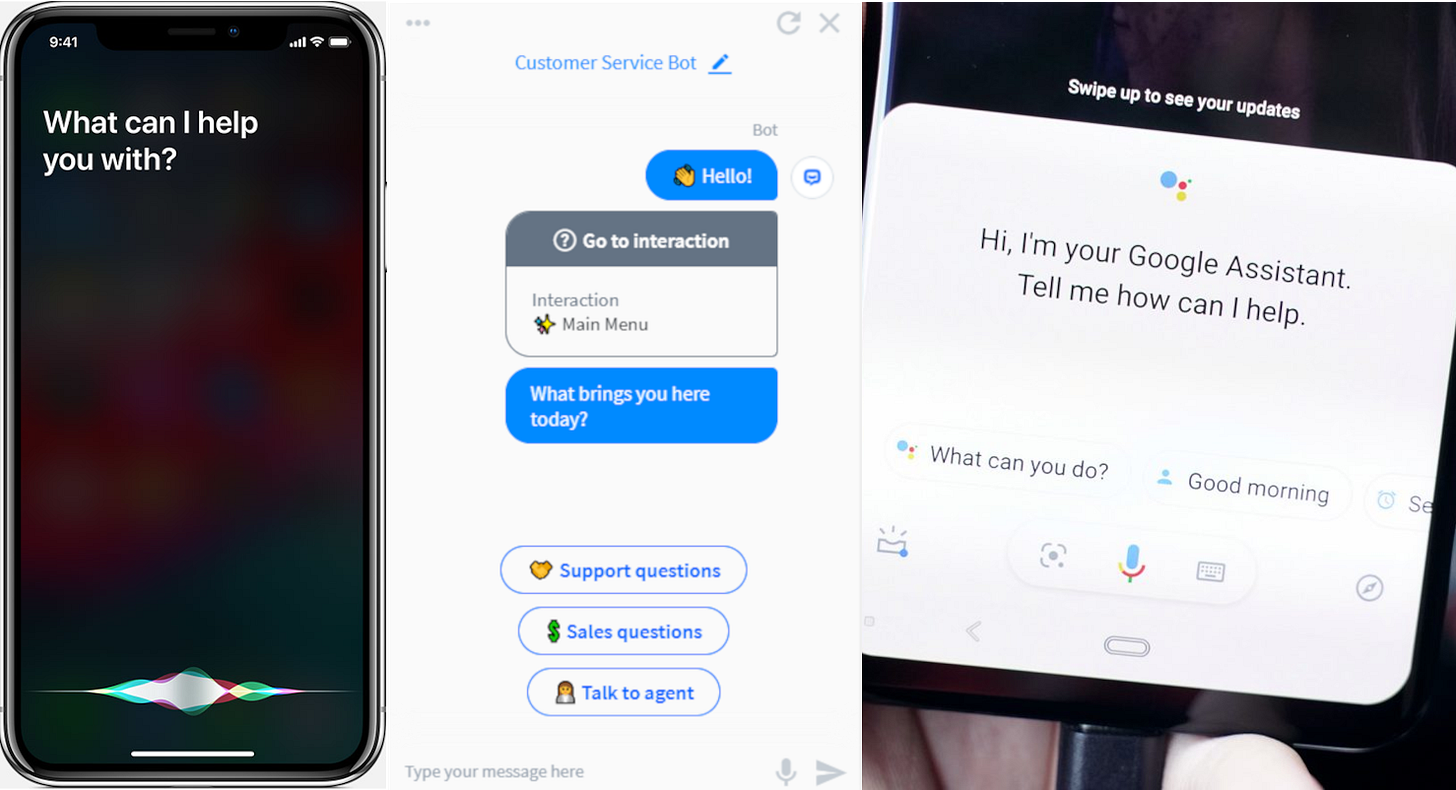What is a Chatbot?
The First Question
Prologue: I use chatbot as the popular term to describe Virtual Assistant, Conversational AI, and the more specific Marketing Chatbot space. These technologies all differ and offer special tradeoffs—which will be covered in future issues—but for simplicity, this article groups them all in the term “chatbot”.
The Answer
A chatbot is a utility that offers your customers an easier way to interact with your product via natural language.
Let’s break it down.

A Utility
A chatbot should not define your product but complement it. At the time of this writing, there are very few products that incorporate chatbot technology as the main differentiator and the main method for user interaction. The majority of chatbot technology adopters use it as a complement for their existing services and as a way to expand their userbase. Cleo is an example of these rare products that are chatbot-first. If you are in an industry that is slow to adopt new technology and does not offer ease-of-use features to their customers, there might be a market opportunity to have a chat-bot first product. Otherwise, most products are better off with using chatbots as a supplement to their value proposition.
Your Customers
Expect any chatbot you build to be customer-facing. At the end of the day, chatbots are meant to make your product easier to access and interact with, so whoever the end-user of your product, they will see this chatbot. In fact, some products make chatbots front and center by highlighting them as a Call To Action button on their landing page. Bank of America was the first bank in the US to roll out a successful chatbot in their mobile apps, and I suspect a large portion of its adoption came from the company’s aggressive marketing campaign both in-app and outside of it (Can you tell I’m a BofA customer?). The red Erica button is in high contrast to the white of the app and represents a visual cue to users with the perpetual one unread notification icon that is sure to drive any millennial insane.

An Easier Way to Interact with your product
User experience (UX) designers and conversational designers, choose your weapons! Chatbots are meant to facilitate ceratin high-volume actions for your users, saving them time from having to go through long menus and 10 different screens (or customer representatives). This is where in-app UX has traditionally operated, and the field of conversational designer begins. In the late 2010s, some UI/UX designers have sacrificed ease of use for clean aesthetics, and chatbots are one way we can have both.
A chatbot aesthetics is inherently minimal, but at the same time its ability to answer any question you train it for means that, with a single sentence, you can access any information or action that might have been buried in the depths of your app. Some banking applications make you go through 10+ screens to transfer money between your own accounts. With a chatbot you can say “Transfer 20 dollars from my savings account to checkings account today” and you’re at the last confirmation screen just like that.
There certainly are different limitations for chatbots, and you’ll have to work hard to build a good chatbot that can have a diverse skill set to match your product’s offering, but that will be covered in future issues. The main takeaway here is that you need to figure out the most common uses for your product and make them accessible through the chatbot. For example, if your product Chinese restaurant order app, a chatbot that can take an order of Hot Pot and a side of dumplings will save your users time and your business money.
Via Natural Language
What do a retired coal miner, an emo punk comic artists, and a 14-year-old TikTocker have in common? They all say “get me a cheeseburger with a side of onion rings” the same way. Chatbots speak the human language. That is the selling point. They bridge the generational divide of iconography and barriers of new User Interface (UI) design. Remember when the hamburger menu (if you know what that is) was supposed to be the savior of UI? Remember when you had to click a physical button to go back to the previous screen on Andriod and Blackberry? UI changes with the wind; language doesn’t. The likelihood that you have to change your chatbot because the language of your audience has evolved to post-modern English is far less likely than you being probed by an alien.
Natural language is deliberately vague since it depends on your audience and where you meet them. The most common forms of natural language input are spoken (voice) and written (keyboard). The reasons for why you would favor one form of input over another are plenty. For example, if your audience accesses your product via a web browser in the U.S., they are more likely to have a keyboard on hand (🥁) than a microphone. However, if your audience is 40+ year olds in rural Burkina Faso, you are better off with a voice chatbot to avoid literacy barriers. Sometimes, your chatbot channel will make the choice for you: Alexa smart home speakers are voice-only.
Next Step
Do you like what you’re reading? Subscribe to this newsletter to get the latest news on chatbots and how to get the most out of them. Avoid common mistakes, and remove barriers for your users by reading expert opinions.

